Label:
Friday 16th December 2016Legal Limbo Ends for Recovered Art Horde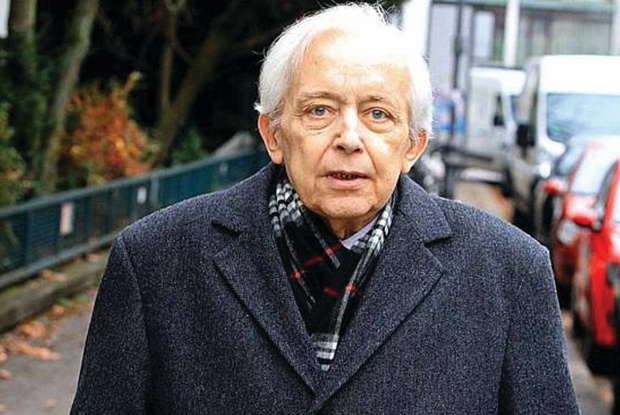
Faithful readers will no doubt remember the story of the treasure trove of artwork discovered recently in the attic of an elderly man in Munich and his second home in Salzburg. Cornelius Gurlitt had inherited the works from his art dealer father, a man who worked closely with the Nazis during World War Two during their destruction and confiscation of so-called 'degenerate art' (which essentially covered anything that wasn't classical Greco-Roman and Aryan, or that they just didn't like).
The provenance of the works was called into question repeatedly, and there were numerous issues concerning the methods by which he had attained them, until the story about his father was revealed. Since then, however, the legal drama has not ended.
Gurlitt eventually passed away in 2014 after undergoing heart surgery, but before he died he left everything in his possession to the Kunstmuseum in Bern, which included all the artworks in his possession. The collection was an impressive one too, featuring works by famous painters such as Otto Dix, Paul Cezanne and Claude Monet, among many others. Unfortunately for the Kunstmuseum, they rapidly received a legal challenge from Gurlitt's next of kin who would otherwise have received the ownership of the pieces.
Uta Werner maintained that Gurlitt was not of sound mind and therefore his will should have been thrown out and typical estate distribution would occur, leaving her the sole beneficiary. Finally, at long last, the Munich Higher Regional Court ruled against the legal challenge, saying that the fact that he wrote the will before his heart surgery indicated he was aware of the seriousness of the situation.
The Kunstmuseum is no doubt very pleased with the news, and the German Culture Minister Monika Grütters issued a statement lauding the fact that a proposed exhibition of the works can now move forwards.
"It is good that we all now have a clear understanding of the legacy of Cornelius Gurlitt. This decision helps us to continue the elucidation of the artifact quickly and transparently. In the end, the path is now free for the joint exhibition plans of the Kunstmuseum Bern and the Kunst- und Ausstellungshalle der Bundes in Bonn for the coming year."
"This step is essential for a responsible and transparent handling of the works and their history, but above all we are also responsible for this treatment for the victims all over the world," Grutters continued.
Photo by Markus Hannich
Posted on December 16th 2016 on 03:35pm
0 Comments
Wednesday 09th November 2016Dump Trump
What is it with artists and toilets?
From the days of Marcel Duchamp and his infamous urinal installation, many conceptual artists seem to feel like a toilet is an original means of expression. While a toilet is arguably a means of expression, it's rarely one that most people would associate with artistic expression.
Of course, we've covered a number of toilet installations in the past partly due to their hilarity factor, but this latest one sort of verges on the surreal. Just days before the upcoming US presidential election between Donald Trump and Hillary Clinton, a toilet covered in a wide range of anti-Trump rhetoric with the words 'Dump on Trump' was left outside the back door of the American Visionary Art Museum.
The Museum is currently treating it as an artistic donation, and has yet to dispose of the "piece" in the hopes that the artist will come forwards.
Rebecca Hoffberger, the executive director and founder of the AVAM says that this is far from the first piece of donated art they have received, and hilariously enough, it's not even the first - or even the second - toilet that they have received.
The first two were sent in by another artist, Duane Gerald "Shorty" Davis Sr., but neither contained anything close to the kind of rhetoric on the 'Dump Trump' sculpture - or perhaps installation piece? Conceptual specimen? Terminology fails to cover such eventualities.
The AVAM has no plans to destroy the piece, but it may not be put on display without a claim of ownership by the artist, and Davis has disavowed this current piece.
"We totally believe in individual freedom of expression, but we’re also very concerned about anything that could be directed ... on just anger and hate. Because in the long run, I don’t think that solves anything," continues Hoffberger.
Here's hoping that the AVAM keeps the piece and that the artist comes forwards to claim the piece in the horrific event of a Trump victory - or even in the case of a Clinton victory, as a memory of just how close the country came to jumping the shark.
Posted on November 09th 2016 on 08:03pm
0 Comments
Friday 13th May 2016The Birth of Glitch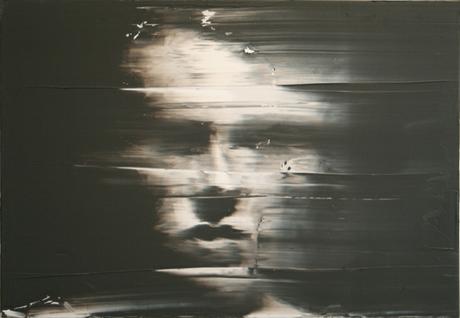 It's not very often that you get to see a new genre developing right before your eyes. In the past, artistic movements took time to gain steam, to gain followers and eventually reach a critical mass when it suddenly tips and begins to be considered a genre in its own right.
It's not very often that you get to see a new genre developing right before your eyes. In the past, artistic movements took time to gain steam, to gain followers and eventually reach a critical mass when it suddenly tips and begins to be considered a genre in its own right.
The digital world has dramatically accelerated this process, thanks to the speed that ideas are disseminated across the globe. The smallest genres that would have fizzled and died before the internet suddenly become viable because everyone around the world can pool their collective ideas.
Take glitch art. Don't worry that you haven't heard of it before, it's still it's infancy - or it may still even be in utero. There isn't an exact nomenclature to discuss how this process works that is readily accessible to most people outside of academia, and even then it's still fairly fluid.
Glitch art is based around the premise of what happens to digital information (which is to say information encoded in 1's and 0's, as all computer files are) when some of the 1's and 0's get scrambled or dropped. You've seen this phenomenon watching modern television, or looking at an internet video that was poorly encoded. Across the arts, creative people were sitting up and taking notice, and glitch was born.
Brian Eno, the famous electronic music artist who helped pioneer the genre, said it best in his book A Year With Swollen Appendicies:
“Whatever you now find weird, ugly, uncomfortable and nasty about a new medium will surely become its signature. CD distortion, the jitteriness of digital video, the crap sound of 8-bit - all of these will be cherished and emulated as soon as they can be avoided. It’s the sound of failure: so much modern art is the sound of things going out of control, of a medium pushing to its limits and breaking apart. The distorted guitar sound is the sound of something too loud for the medium supposed to carry it. The blues singer with the cracked voice is the sound of an emotional cry too powerful for the throat that releases it. The excitement of grainy film, of bleached-out black and white, is the excitement of witnessing events too momentous for the medium assigned to record them.”
The same holds true with the nascent genre of glitch art. The digital artifacts that come from missing data *become* data in their own right; they transcend themselves even as they transmogrify themselves. Already at least one major music group (The Glitch Mob) has arisen from the glitch movement, and there are many visual artists who are also eagerly awaiting their breakout moment of recognition.
Posted on May 13th 2016 on 07:42pm
0 Comments
Monday 29th February 2016A Torrent of Images Catches the AP and the WPP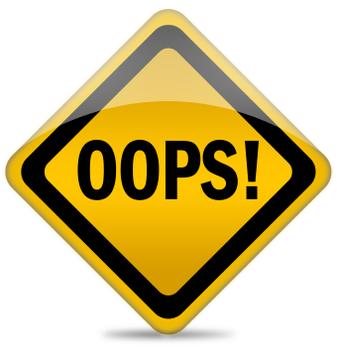
Just last week we posted about the World Press Photo competition, and the hauntingly gritty winning photo by Warren Richardson of refugees sneaking under razorwire to cross borders in the dead of night. All congratulations to him, but there's been a bit of embarrassment in the rest of the contest, as one of the winners in the People category had to be removed by the submitter - the Associated Press, of all groups.
The photos in question won third prize in the People category, a series by Daniel Ochoa de Olza featuring victims of the horrific terrorist attacks in Paris during 2015. According to the Associated Press, the photo series was submitted in error, which is a strange sort of excuse considering they stood up long enough to pass through the jury pool and be voted a winner.
Weirdly enough, de Olza had actually also won the second prize in the same category, so it isn't nearly as much of a hardship for him as it might first seem. Managing director Lars Boering of the World Press Photo Foundation, the organization that hosts the WPP event each year, said in a statement:
“The jury had an abundance of quality photography to choose from in each category, and our processes are organized so we can accommodate an unforeseen circumstance—such as the withdrawal of a story by the owner of the entry. We are delighted to give the third-prize award to Magnus Wennman, a very worthy winner. We’re sorry that Daniel Ochoa de Olza’s third-prize award cannot stand given the request to withdraw the entry, but we’re happy that Daniel has also won second prize in the same category for his ‘La Maya Tradition’ story. I’ve spoken with Magnus and Daniel to congratulate both of them and we’re very pleased they can join us in April for the Awards Days.”
It does sort of beg the question of relevancy, however. Perhaps de Olza's photos really are so spectacular, but the fact that the same photographer can win consecutive prizes in the same category makes one wonder if the World Press Photo contest is receiving sufficient attention in terms of submissions, or if there is something influencing the judge's opinions. Either way, it's sort of an embarrassment for everyone involved in the jury and submissions process, and simply a bit disappointing for de Olza. Here's hoping that next year will have a more varied crop of winners!
Posted on February 29th 2016 on 05:38pm
0 Comments
Friday 17th July 2015Smithsonian / Cosby Controversy Deepens
Perhaps the most curiously controversial art exhibit in the United States right now is taking place at an unlikely source: that venerable bastion of American culture and heritage, the Smithsonian Museum. The curious aspect is that the pieces themselves have not caused the controversy, but rather the collector who loaned the majority of the pieces in the exhibition, Bill Cosby. Formerly a beloved television father and comedian, Cosby has since been accused of a number of sexual assaults, and even more recently, an unsealed 2005 deposition documents him admitting to at least some aspects of the allegations. While he hasn't been formally charged, he has naturally been the target of much anger and controversy.
The exhibit, entitled 'Conversations: African and African American Artworks in Dialogue,' features an impressive collection of African and African American artists, largely from Cosby's personal collection. The Smithsonian has attracted its own fair share of anger, and recently made a public statement about the decision to keep the show open despite the incredible volume of complaints it has received about the exhibit.
A statement from the head of media relations at the Smithsonian last week explained their position: "The museum in no way condones this behavior. Our current ‘Conversations’ exhibition, which includes works of African art from our permanent collection and African American art from the collection of Camille and Bill Cosby, is fundamentally about the artworks and the artists who created them, not the owners of the collection." That seems reasonable enough, in theory.
It's quite a shame: the Smithsonian is correct, naturally, that the works and the artists should not be thought of in the context of Cosby's actions, but further developments have recently come to light. It's the standard practice of major museums and galleries to disclose donations made, and to make public a list of the names of all major donors. A report by the Associated Press has disclosed that Cosby actually made an extremely significant donation to the Smithsonian - to the tune of $716,000 USD, apparently equivalent to the cost of maintaining the entire show, which runs until April 2016.
Suddenly, the Smithsonian decision begins to seem a little more suspect. Naturally, the artworks themselves should be seen and viewed, but their decision to keep the exhibit open and to accept Cosby's money at the same time begins to suggest that this is really more of a publicity campaign for Cosby during a difficult time for his public image - and that's not really what museums and galleries are about, is it?
Posted on July 17th 2015 on 03:56pm
0 Comments
Friday 19th June 2015Reconstructing Lost Artworks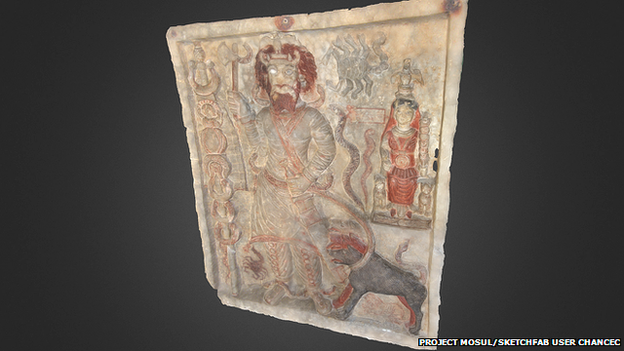
War is a terrible and seeming inescapable part of the world, and we pay uncountable prices for it, both literally and figuratively - but one of the tragically often-ignored prices is in the cultural treasures that are lost along the way. Most notable recently during the invasion of Iraq in 2003 when numerous museums and galleries were looted, and unfortunately still occurring today thanks to the constant fighting in many areas of Iraq and neighbouring countries due to the rise of the Islamic State, some treasures are being stolen and sold on the black market, while some are simply being destroyed. Fortunately for the cultural history of the world, some of these priceless artifacts are being reconstructed using an advanced technology known as photogrammetry.
Photogrammetry is a process that takes multiple photos of a different angles of an object and recreates them as a digital 3D file, one that could then be either rendered and viewed on the computer screen, or even put through a 3D printer to create a replica of the original piece. Naturally, these can never replace the value of the lost works, but since most will never see the light of day again, it's the best chance we're likely to have.
One of the most interesting projects to come along that uses these techniques is named Project Mosul, after the now-destroyed Mosul Museum. It's based around a crowdsourcing effort, so that anyone who visited the museum and snapped pictures of the pieces on display can submit their photographs to the project to help refine the 3D models of destroyed artworks. The more source photographs there are, the more detailed the reconstruction can be, as each photograph is typically taken from a slightly different angle, which gives a slightly different description of the 3D surfaces of the object in question.
The founders of Project Mosul, who are entirely volunteer staff, hope to expand the project to cover other destroyed sites around the world, and open up new possibilities for experiencing cultural treasures that have been destroyed. Would that it weren't necessary, but war sadly seems to be one of the most constant phenomenons throughout history - perhaps one day, we'll be able to overcome even that legacy.
Speaking to the BBC, Project Mosul co-founder Matthew Vincent said, "3D printing is really proving to be one of the most valuable assets for heritage that we have today. It's a way to bring them back to life and have a tactile experience with them, even if we can't guarantee that they're exactly as the original would have been.
"Whether it is because of conflict or natural disaster, our heritage is such a delicate and valuable resource, the only way that we can really preserve it is to take the steps to make those digital surrogates, so that we can protect the physical reality of that heritage as well."
Posted on June 19th 2015 on 09:15pm
0 Comments
Friday 16th January 2015Artist Spotlight: Alex Grey
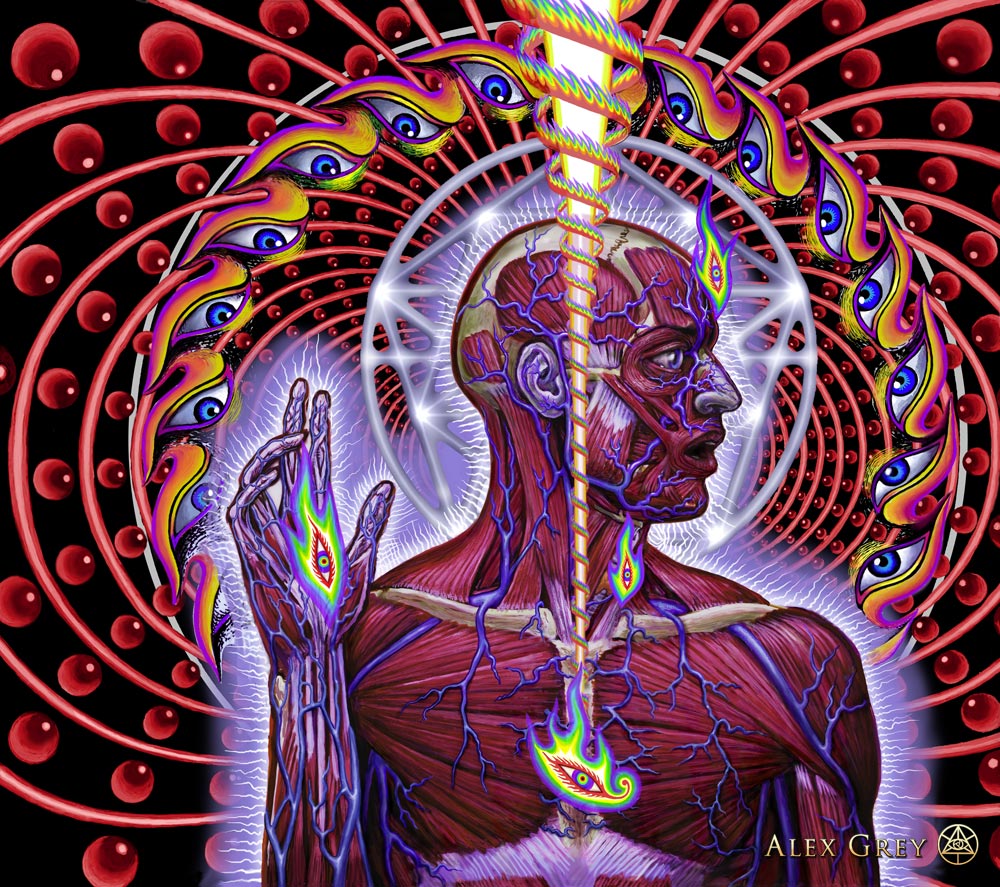
If you're familiar with the progressive/art-rock band Tool, you're probably familiar with the work of Alex Grey. His artwork has adorned many of their latest albums, and this helped to widely popularize his work among a certain generation. A remarkably unique contemporary artist, his style is incredibly intricate and detailed, often incorporating repetitive fractal geometries and the human form.
While Grey works in a number of media, his primary focus is on painting, and he has created an impressively large body of work. The underlying themes tend to be extremely gentle, caring, and uplifting, which is a refreshing change from we see so much of today. The New York Times said, "Grey’s vision of a flawed but perfectible mankind stands as an antidote to the cynicism and spiritual malaise prevalent in much contemporary art," and they are exactly correct.
To be fair, there is a certain amount of hippie-drug-culture-age-of-aquarius-flakiness involved as well, but it's hard to find much fault with that when the underlying message is so overwhelming positive. It may not be for everyone, but it's nice to know they're out there.
“My art has always been in response to visions. Rather than confine myself to representations of the outer worlds, I include portrayals of multi-dimensional imaginal realms that pull us towards consciousness evolution.”
Some of the most exciting contemporary artwork is being done by people who are willing to be completely open and honest about their love of humanity, reality, and the world itself, and it makes the art world's currently fashionable ironic cynicism feel hollow and disgusting. The fact that Grey has wound up his art almost entirely as an extension of his philosophies about the universe, the nature of reality and the value of mystical experience communicates the genuine nature of his convictions, something that has been lacking in the art world for far, far too long.
As the generation of artists, thinkers and philosophers who have been influenced by his work and his ideas, hopefully it will coincide with a backlash against the frustratingly apathetic cynicism that postmodernism has gifted us with, and that has gripped us all for too long. It's still useful, of course - but as in all things, balance is the most important.
Posted on January 16th 2015 on 04:44pm
0 Comments
Friday 07th November 2014Ancient Art
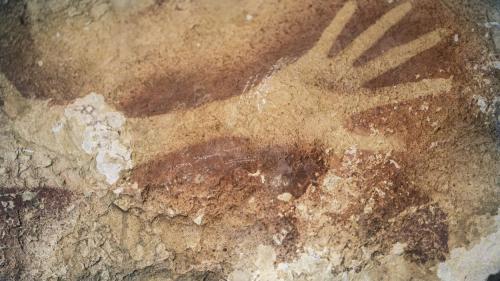 When you think of the earliest examples of artwork ever discovered, you probably think of cavemen painting on walls. Primitive hunting scenes, and extremely crudely stylised figures of men and women in various basic layouts. You may even be able to call to mind some of the more well-known examples that you probably learned about in school - the cave paintings in Lascaux, France, being one of the most popular examples in the latter half of the 20th century. The earliest recorded examples in Europe are dated to roughly 30,000 BCE, and are found in Spain, in the El Castillo cave. It may surprise you to learn, then, that these are not even remotely close to the earliest recorded human artwork, as a recent study discovered.
When you think of the earliest examples of artwork ever discovered, you probably think of cavemen painting on walls. Primitive hunting scenes, and extremely crudely stylised figures of men and women in various basic layouts. You may even be able to call to mind some of the more well-known examples that you probably learned about in school - the cave paintings in Lascaux, France, being one of the most popular examples in the latter half of the 20th century. The earliest recorded examples in Europe are dated to roughly 30,000 BCE, and are found in Spain, in the El Castillo cave. It may surprise you to learn, then, that these are not even remotely close to the earliest recorded human artwork, as a recent study discovered.
Examining various rock art formations and paintings across Southeast Asia, a team from Griffith University lead by Professor Paul Taçon discovered that many of the formations dated to 40,000 BCE, and are widespread across all of Southeast Asia, from Indonesia to China to Malaysia and Thailand. This may not seem too remarkable, at first, until you realize that up until this study, many scholars had theorized that artistic practices had first evolved in Europe and then spread outwards via human migrations as tribes expanded and explored new areas.
Those of you with a sociological or anthropological background will no doubt immediately notice the flaw in that Eurocentric view and be unsurprised by it, but these findings are solid evidence that artistic practices evolved much earlier than are evidenced in Europe, and suggest that as early humans migrated out of Africa, they took a thriving artistic practice with them, instead of developing one along the way.
This theory would likely have been disproven much earlier, if it weren't for the fact that the unique geology of Africa makes it less likely to find artworks protected from the elements, which can rapidly decay artwork to the point of unrecognizability. It is often theorized that the reason we find cave paintings dated from that time period isn't because early humans only painted in caves, but rather because those are the only places where they have been preserved.
Sometimes, when struggling with a piece of work in the present day, it can be helpful to think about the fact that human beings have been creating for longer than we can easily imagine. It's an inextricable part of our consciousness, and no matter how difficult it can seem at the time, it's literally part of us to create.
Posted on November 07th 2014 on 08:59pm
0 Comments
Wednesday 17th September 2014Artist Spotlight: Paul Wainwright
Someone once said that the best ideas are often simply looking at old ideas in a new way - in a new light. That's exactly what artist Paul Wainwright has done in his latest series, a beautiful photographic experiment using pendulums. Also known as a harmonograph, Wainwright took the cavernous space of his empty New England barn and converted it into a giant harmonograph. Originally developed in the 1840s as a type of drawing machine, the harmonograph was initially configured with a small bag of sand or other fine material attached to a long rope or string. A hole was cut in the bag, and the bag was set swinging. As the pendulum moved through its stately and often unexpected arcs, a beautiful series of line drawings emerged, carving out the path of the pendulum onto the paper. The more complicated harmonographs incorporated two or more strings, so that competing pulls in various directions would set the bag swinging in more complicated patterns.
Wainwright has taken that concept one step further, attaching a light source to the end of his pendulum in place of a bag of sand, and taken long exposure photographs of the resulting patterns. Known (apparently only to mathematicians) as Lassajous figures, though the more popular name harmonograph is generally the term used by the public. Wainwright's camera points directly upward from beneath the pendulum, making the focal plane of the camera analogous to the sheet of paper in the original device from the 19th century.
Most reviewers interested in his pendulum project only casually note that he is also an accomplished large format black and white photogapher, and attempt to describe his pendulum project as a hobby- but that strikes this writer as a fairly naive interpretation of what an artist actually does. All our projects are hobbies, with the possible exception of commissioned works, and yet at the same time none of them are. Any hobby that involves passionate creation should be considered artwork, whether it involves traditional perceptions of what 'art' is or not.
To see more of his work, be sure to visit his site at paulwainwrightphotography.com to see the full collection of his beautiful harmonographs, learn more about his other work, and buy some prints while you're at it! Just don't hold it against him that he was, in fact, actually a physics major ;-)
Posted on September 17th 2014 on 11:53pm
0 Comments
Monday 25th August 2014More Works in the Art Trove
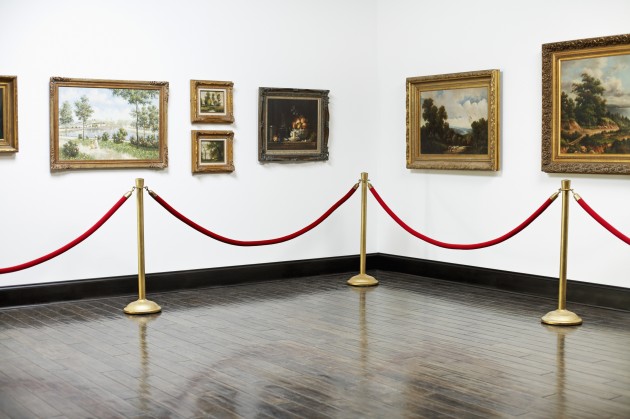
If you read the news on a regular basis - or this blog - you'll probably remember hearing about a stash of artwork that was found in Germany recently in the house of an aging and now deceased collector. Discovered in the Munich apartment of Cornelius Gurlitt, who died in May of this year, the surprising number of works - well over 1200, at last count - were at first considered as a means of settling the debts he had incurred due to tax evasion, until it was discovered how valuable many of the pieces are. The German government assigned a team to research the works and their provenance, and came to the awkward conclusion that many of them were likely looted by the Nazi armies of World War Two. There was immediate outrage that the government hadn't come forwards with the news to assist in restitutions to the families whose property had been stolen so many years ago. When news of another trove in Salzburg, Austria surfaced, further excitement and media speculation settled on the reclusive Gurlitt, who left his entire collection to the Kunstmuseum Bern in Switzerland.
Recently, however, it has come to light that there are two more unexpected works by grand masters in the collection, which has come to be known as the Munich Art Trove. While it's not yet completely confirmed, it appears that two sculptures found in the Trove are actually works by Auguste Rodin and Edgar Degas. The German government currently maintains a website full of images of stolen and looted artwork, and these pieces will definitely be added to the collection in the hopes of connecting them with their previous owners. To date, only one of the looted pieces has been returned to a verified owner, a Matisse portrait that was the property of Paul Rosenberg, although now that Gurlitt has died, there is a long grinding bureaucratic process underway to wade through before the piece will actually be returned.
With any luck, the image databank run by the government and the dedicated art sleuthing by the investigative team in charge of verifying the artworks will quickly have these masterpieces returned to their rightful owners, where the art world can once again appreciate the grandeur of the European artists' missing works.
Posted on August 25th 2014 on 12:42pm
0 Comments
 Faithful readers will no doubt remember the story of the treasure trove of artwork discovered recently in the attic of an elderly man in Munich and his second home in Salzburg. Cornelius Gurlitt had inherited the works from his art dealer father, a man who worked closely with the Nazis during World War Two during their destruction and confiscation of so-called 'degenerate art' (which essentially covered anything that wasn't classical Greco-Roman and Aryan, or that they just didn't like).
Faithful readers will no doubt remember the story of the treasure trove of artwork discovered recently in the attic of an elderly man in Munich and his second home in Salzburg. Cornelius Gurlitt had inherited the works from his art dealer father, a man who worked closely with the Nazis during World War Two during their destruction and confiscation of so-called 'degenerate art' (which essentially covered anything that wasn't classical Greco-Roman and Aryan, or that they just didn't like). What is it with artists and toilets?
What is it with artists and toilets? It's not very often that you get to see a new genre developing right before your eyes. In the past, artistic movements took time to gain steam, to gain followers and eventually reach a critical mass when it suddenly tips and begins to be considered a genre in its own right.
It's not very often that you get to see a new genre developing right before your eyes. In the past, artistic movements took time to gain steam, to gain followers and eventually reach a critical mass when it suddenly tips and begins to be considered a genre in its own right.  Just last week we posted about the World Press Photo competition, and the hauntingly gritty winning photo by Warren Richardson of refugees sneaking under razorwire to cross borders in the dead of night. All congratulations to him, but there's been a bit of embarrassment in the rest of the contest, as one of the winners in the People category had to be removed by the submitter - the Associated Press, of all groups.
Just last week we posted about the World Press Photo competition, and the hauntingly gritty winning photo by Warren Richardson of refugees sneaking under razorwire to cross borders in the dead of night. All congratulations to him, but there's been a bit of embarrassment in the rest of the contest, as one of the winners in the People category had to be removed by the submitter - the Associated Press, of all groups. Perhaps the most curiously controversial art exhibit in the United States right now is taking place at an unlikely source: that venerable bastion of American culture and heritage, the Smithsonian Museum. The curious aspect is that the pieces themselves have not caused the controversy, but rather the collector who loaned the majority of the pieces in the exhibition, Bill Cosby. Formerly a beloved television father and comedian, Cosby has since been accused of a number of sexual assaults, and even more recently, an unsealed 2005 deposition documents him admitting to at least some aspects of the allegations. While he hasn't been formally charged, he has naturally been the target of much anger and controversy.
Perhaps the most curiously controversial art exhibit in the United States right now is taking place at an unlikely source: that venerable bastion of American culture and heritage, the Smithsonian Museum. The curious aspect is that the pieces themselves have not caused the controversy, but rather the collector who loaned the majority of the pieces in the exhibition, Bill Cosby. Formerly a beloved television father and comedian, Cosby has since been accused of a number of sexual assaults, and even more recently, an unsealed 2005 deposition documents him admitting to at least some aspects of the allegations. While he hasn't been formally charged, he has naturally been the target of much anger and controversy. War is a terrible and seeming inescapable part of the world, and we pay uncountable prices for it, both literally and figuratively - but one of the tragically often-ignored prices is in the cultural treasures that are lost along the way. Most notable recently during the invasion of Iraq in 2003 when numerous museums and galleries were looted, and unfortunately still occurring today thanks to the constant fighting in many areas of Iraq and neighbouring countries due to the rise of the Islamic State, some treasures are being stolen and sold on the black market, while some are simply being destroyed. Fortunately for the cultural history of the world, some of these priceless artifacts are being reconstructed using an advanced technology known as photogrammetry.
War is a terrible and seeming inescapable part of the world, and we pay uncountable prices for it, both literally and figuratively - but one of the tragically often-ignored prices is in the cultural treasures that are lost along the way. Most notable recently during the invasion of Iraq in 2003 when numerous museums and galleries were looted, and unfortunately still occurring today thanks to the constant fighting in many areas of Iraq and neighbouring countries due to the rise of the Islamic State, some treasures are being stolen and sold on the black market, while some are simply being destroyed. Fortunately for the cultural history of the world, some of these priceless artifacts are being reconstructed using an advanced technology known as photogrammetry. If you're familiar with the progressive/art-rock band Tool, you're probably familiar with the work of Alex Grey. His artwork has adorned many of their latest albums, and this helped to widely popularize his work among a certain generation. A remarkably unique contemporary artist, his style is incredibly intricate and detailed, often incorporating repetitive fractal geometries and the human form.
If you're familiar with the progressive/art-rock band Tool, you're probably familiar with the work of Alex Grey. His artwork has adorned many of their latest albums, and this helped to widely popularize his work among a certain generation. A remarkably unique contemporary artist, his style is incredibly intricate and detailed, often incorporating repetitive fractal geometries and the human form. When you think of the earliest examples of artwork ever discovered, you probably think of cavemen painting on walls. Primitive hunting scenes, and extremely crudely stylised figures of men and women in various basic layouts. You may even be able to call to mind some of the more well-known examples that you probably learned about in school - the cave paintings in Lascaux, France, being one of the most popular examples in the latter half of the 20th century. The earliest recorded examples in Europe are dated to roughly 30,000 BCE, and are found in Spain, in the El Castillo cave. It may surprise you to learn, then, that these are not even remotely close to the earliest recorded human artwork, as a recent study discovered.
When you think of the earliest examples of artwork ever discovered, you probably think of cavemen painting on walls. Primitive hunting scenes, and extremely crudely stylised figures of men and women in various basic layouts. You may even be able to call to mind some of the more well-known examples that you probably learned about in school - the cave paintings in Lascaux, France, being one of the most popular examples in the latter half of the 20th century. The earliest recorded examples in Europe are dated to roughly 30,000 BCE, and are found in Spain, in the El Castillo cave. It may surprise you to learn, then, that these are not even remotely close to the earliest recorded human artwork, as a recent study discovered. Someone once said that the best ideas are often simply looking at old ideas in a new way - in a new light. That's exactly what artist Paul Wainwright has done in his latest series, a beautiful photographic experiment using pendulums. Also known as a harmonograph, Wainwright took the cavernous space of his empty New England barn and converted it into a giant harmonograph. Originally developed in the 1840s as a type of drawing machine, the harmonograph was initially configured with a small bag of sand or other fine material attached to a long rope or string. A hole was cut in the bag, and the bag was set swinging. As the pendulum moved through its stately and often unexpected arcs, a beautiful series of line drawings emerged, carving out the path of the pendulum onto the paper. The more complicated harmonographs incorporated two or more strings, so that competing pulls in various directions would set the bag swinging in more complicated patterns.
Someone once said that the best ideas are often simply looking at old ideas in a new way - in a new light. That's exactly what artist Paul Wainwright has done in his latest series, a beautiful photographic experiment using pendulums. Also known as a harmonograph, Wainwright took the cavernous space of his empty New England barn and converted it into a giant harmonograph. Originally developed in the 1840s as a type of drawing machine, the harmonograph was initially configured with a small bag of sand or other fine material attached to a long rope or string. A hole was cut in the bag, and the bag was set swinging. As the pendulum moved through its stately and often unexpected arcs, a beautiful series of line drawings emerged, carving out the path of the pendulum onto the paper. The more complicated harmonographs incorporated two or more strings, so that competing pulls in various directions would set the bag swinging in more complicated patterns. If you read the news on a regular basis - or this blog - you'll probably remember hearing about a stash of artwork that was found in Germany recently in the house of an aging and now deceased collector. Discovered in the Munich apartment of Cornelius Gurlitt, who died in May of this year, the surprising number of works - well over 1200, at last count - were at first considered as a means of settling the debts he had incurred due to tax evasion, until it was discovered how valuable many of the pieces are. The German government assigned a team to research the works and their provenance, and came to the awkward conclusion that many of them were likely looted by the Nazi armies of World War Two. There was immediate outrage that the government hadn't come forwards with the news to assist in restitutions to the families whose property had been stolen so many years ago. When news of another trove in Salzburg, Austria surfaced, further excitement and media speculation settled on the reclusive Gurlitt, who left his entire collection to the Kunstmuseum Bern in Switzerland.
If you read the news on a regular basis - or this blog - you'll probably remember hearing about a stash of artwork that was found in Germany recently in the house of an aging and now deceased collector. Discovered in the Munich apartment of Cornelius Gurlitt, who died in May of this year, the surprising number of works - well over 1200, at last count - were at first considered as a means of settling the debts he had incurred due to tax evasion, until it was discovered how valuable many of the pieces are. The German government assigned a team to research the works and their provenance, and came to the awkward conclusion that many of them were likely looted by the Nazi armies of World War Two. There was immediate outrage that the government hadn't come forwards with the news to assist in restitutions to the families whose property had been stolen so many years ago. When news of another trove in Salzburg, Austria surfaced, further excitement and media speculation settled on the reclusive Gurlitt, who left his entire collection to the Kunstmuseum Bern in Switzerland.



